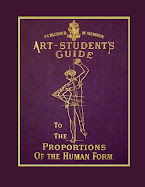



Encyclopédie, ou, Dictionnaire universel raisonné des connoissances humaines By Denis Diderot, Fortuné Barthélemy de Félice.
From Wikipedia:
The Encyclopaedia or Universal Dictionary of rational human knowledge, called Yverdon Encyclopedia was an encyclopedia published between 1770 and 1780 in 58 quarto volumes (42 articles, 6 of supplements and 10 boards).
Inspired by the Encyclopedia of Diderot and d'Alembert, it manifests the will to give it a European scale, to review the theoretical foundations and significantly expand the scope of knowledge.
To this end, Fortunato Bartolomeo De Felice, an Italian scientist based in Yverdon, Switzerland, gathered around him a team of over thirty European collaborators (there are among the authors identified fifteen Swiss twelve French, three Germans, an Italian , an Irishman). Around a core group of collaborators Swiss Romand (De Felice himself pastors Mingard Gabriel, Alexander and Caesar Chavannes Elie Bertrand), we find among others Jean-Henri Andrié (over 4,200 items of Geography), Jacques-Antoine Henry Deleuze (1030 records of botanical and natural history) and Jean Henri Samuel of Formey, permanent secretary of the Berlin Academy.
There is a copy at Google Books.
A printed copy at Amazon.com:

Encyclopedie Ou Dictionnaire Universel Raisonne V37: Des Connoissances Humaines (1774) (French Edition)



The book is mentioned in Histoire de la science. Here is a partial translation"
A second major change in the movement of the Enlightenment from the last century originated in France, with encyclopedias. This intellectual movement argues that architecture is a scientific and moral knowledge. The philosopher Denis Diderot and the mathematician d'Alembert in 1751 published the Encyclopedia or dictionary of the sciences, arts and crafts that can take on the state of knowledge at the time. Encyclopedia becomes a hymn to scientific progress.
 Laocoon from the Encyclopedia.
Laocoon from the Encyclopedia. Laocoon from Audran's book.
Laocoon from Audran's book.
Hagesandros, Polydoros, and Athanadoros of Rhodes. Laocoön and His Sons perhaps the original of the 2nd or 1st century BCE or a Roman copy of the 1st century CE. Musei Vaticani, Museo Pio Clementino, Cortile Ottagono, Rome.
Some of the plates in the book seem to be derived from Girard Audran's Les Proportions du Corps Humain, Mesurees sur les plus belles Figures de l'Antiquite



















you have a fantastic blog !!!
ReplyDeleteThank you, I am glad you enjoy it.
ReplyDeleteAwesome love the photos
ReplyDeleteputs human bodies in great perspective
very helpful
Thank you, glad it helped you.
ReplyDelete